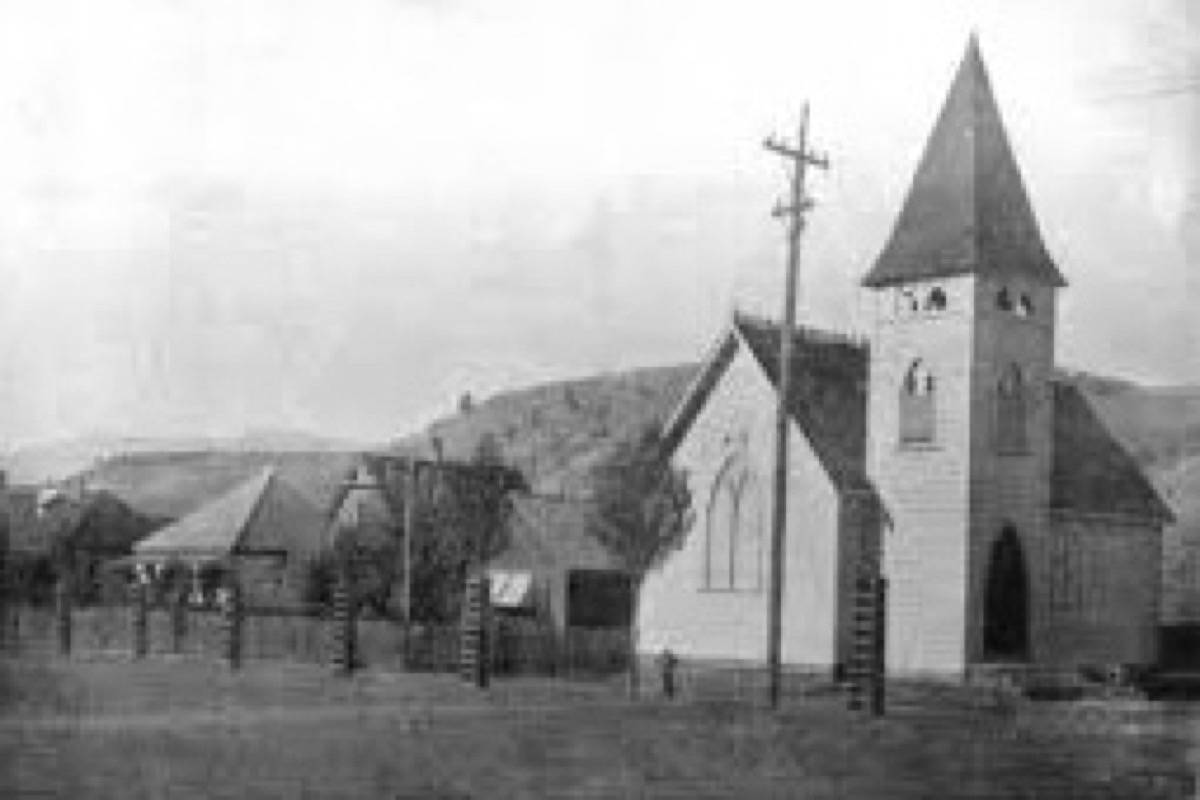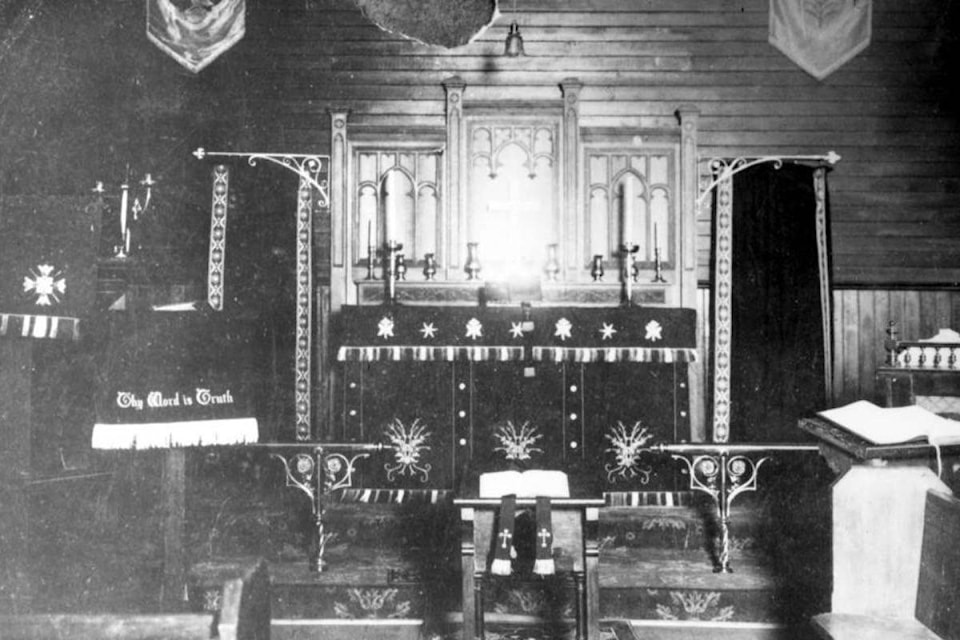Prior to the establishment of towns and villages throughout the Interior of B.C., missionaries travelled the province, stopping where they could—homesteads, ranches, trading posts, even roadhouses and saloons—to give sermons. The Revd. Mr. G. Murray came to Ashcroft (now Ashcroft Manor) from Merritt by horseback, and said that “My first trip to Nicola was in November 1882. I do not remember having seen any church building then between Kamloops and Spences Bridge.”
It is not that religion was unimportant to early settlers in the B.C. Interior; it simply had to take a back seat for people who were trying to establish themselves, which usually meant building a home, clearing land, and trying to earn a living. However, by 1890 it was felt that Ashcroft—by then an established town and important transportation hub—needed a church, in addition to its hotels, saloons, bars, stores, restaurants, and other establishments. The fact that more women were arriving, marrying, and having families doubtless played a part as well.
In the absence of a church, those bringing religious services to Ashcroft made use of whatever building was available. Between 1890 and 1892 a Mr. McMorris and a Mr. Fitzpatrick held services in the town; if a private home was not available they used the Ashcroft Hotel, where they would often empty the barroom.
It was in 1890 that Canon Cooper proposed the construction of an Anglican church in Ashcroft. It is perhaps not surprising that an Anglican church was the first one constructed in Ashcroft, since the Anglican religion symbolized the “mother country” or “home” in a town where almost 50 per cent of the population were of English extraction.
A meeting was held, and among those present was Clement Cornwall, who had been a judge and a Lieutenant-Governor of the province, and therefore had considerable “pull” with the government in Victoria. The Revd. Mr. A. Sheldrick of the Diocese of New Westminster visited the town, and was encouraged by resident John Glassey to make plans for a small church building, for which $100 had already been promised. Two plans were drawn up by master carpenter William Higginbottom, and Sheldrick chose one.
Clement Cornwall’s wife Charlotte took the plan to Victoria, and her persuasiveness was enough to persuade the province to provide $300 towards construction of a church. Even with the $100 that had already been raised, Higginbottom felt that the prospect of raising the rest of the necessary funds did not appear bright at first.
However, a committee was formed, which began fundraising for the money needed to build the church. By the time construction started in May 1891 the population of the town had grown considerably, and the new residents contributed handsomely, raising a total of $250 locally.
J.C. Barnes set aside some of the land his family owned at the corner of 5th and Brink Streets for the construction of the church, which was entrusted to Higginbottom, and work on it was completed in July of 1891. Higginbottom also constructed the pews, priest’s chair and Bishop’s chair, altar, lectern, prayer desk, and railing; the pews, altar, and railing in the church are all original to the building. The church was officially opened by Bishop Acton Windeyer Sillitoe, the Bishop of New Westminster, whose diocese stretched from the 45th to the 54th parallel, and from the Rocky Mountains to the Pacific Ocean, covering an area of some 160,000 square miles.
The Bishop was assisted by Sheldrick, and the first permanent priest was the Revd. Alexander Ramsey McDuff, who was at St. Alban’s from 1892–93. Members of the community donated articles and furnishings, and a group of ladies in England supplied some altar covers. There was also an organ and a bell (the latter purchased in England at a cost of $400), and shortly after the church was completed a vicarage was built beside it on Brink Street. The cost of the church, including construction and fixtures and fittings (but not including the bell), appears to have been around $750 (about $19,000 today).
In 1949 the interior of the church received a major redecoration, including the windows painted to look like stained glass which are in place today. They were designed and painted by Mrs. J.L. Clark, wife of the then-vicar. Between 1962 and 1964 the new hall at the church was opened, with 75 people on hand for a potluck dinner.
The Revd. Mr. W. Drury, vicar of St. Alban’s, thanked all those who had made the building, and the event, possible. These included the ladies of the Women’s Association, who had arranged the supper, with Drury saying that “The hall shared with the ladies the claim to be the most attractive in Ashcroft, but that he hoped the hall, again like the ladies, would gain its reputation for usefulness, not for ornament alone.”
In 1970 the future of the church was feared for, as outside funding was being withdrawn from churches across the country. However, St. Alban’s Anglican Church, with its inviting red door, still thrives, and in 2016 celebrated its 125th anniversary with a celebration attended by residents and many people who have been associated closely with the church over the years.
St. Alban’s is now located within the Territory of the People (formerly the Anglican Parishes of the Central Interior). Reflecting changes within the Anglican church in recent years that would have been unimaginable to those who oversaw the construction of the church, or even to the Revd. Mr. Drury in the 1960s, the Bishop of the Territory (Barbara Andrews), the Deacon of St. Alban’s (Lois Petty), and the church’s Incumbent Priest (Martina Duncan) are all women.
editorial@accjournal.ca
Like us on Facebook and follow us on Twitter

